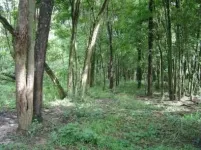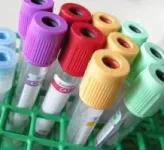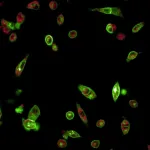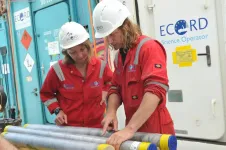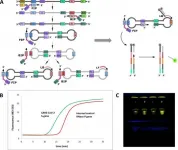According to the authors, in terms of carbon storage, the biomass erosion corresponds to the destruction of 70,000 square kilometers (km²) of forest - almost 10 million soccer pitches - or USD 2.3 billion-USD 2.6 billion in carbon credits. "These figures have direct implications for mechanisms of climate change mitigation," they state in the article.
Atlantic Rainforest remnants in Brazil are strung along its long coastline. The biome once covered 15% of Brazil, totaling 1,315,460 km². Only 20% of the original area is now left. The fragments are of varying sizes and have different characteristics.
To estimate the impact of human activity on these remnants, the researchers used data from 1,819 forest inventories conducted by several research groups.
"These inventories are a sort of tree census. The researchers go into the field and choose an area to survey, typically 100 meters by 100 meters. All the trees found within this perimeter are identified, analyzed, and measured," said Renato de Lima (https://bv.fapesp.br/en/pesquisador/668300/renato-augusto-ferreira-de-lima), a researcher at the University of São Paulo's Institute of Biosciences (IB-USP) and leader of the study. "We compiled all the data available in the scientific literature and calculated the average loss of biodiversity and biomass in the fragments studied, which represent 1% of the biome. We then used statistical methods to extrapolate the results to the fragments not studied, assuming that the impact would be constant throughout the Atlantic Rainforest biome."
After identifying the tree species in a fragment, the researchers estimated the size of their seeds and also what they call the "ecological or successional group". These two factors indicate how healthy the forest is, according to Lima. "There are hardy plants that require very little in the way of local resources and can grow on wasteland, pasture, forest borders, etc. These are known as pioneer species. A Brazilian example is the Ambay pumpwood [Cecropia pachystachya]," he said.
Pioneer tree species tend to produce seeds of smaller size, but in large numbers, because each seed has such a small chance of germinating. At the opposite extreme are climax species that flourish only in favorable environments, such as Brazilwood (Paubrasilia echinata) or various species of the genus Ocotea. These trees produce larger seeds with a substantial store of nutrients.
"This kind of seed requires a heavier investment by the parent tree in terms of energy," Lima said. "Areas in which climax species are present typically support more diversified fauna, so they serve as a marker of overall forest quality. Areas in which pioneer species predominate have probably been disturbed in the recent past."
The IB-USP group set out to show how the loss of late-successional species correlated with overall biodiversity loss and also with biomass loss, which represents the reduction in the forest's capacity to store carbon and keep this greenhouse gas out of the atmosphere. They found the forest fragments studied to have 25%-32% less biomass, 23%-31% fewer tree species, and 33%-42% fewer individuals belonging to late-successional, large-seeded, and endemic species.
The analysis also showed that biodiversity and biomass erosion were lower in strictly protected conservation units, especially large ones. "The smaller the forest fragment and the larger the edge area, the easier it is for people to gain access and disturb the remnant," Lima said.
On the positive side, degraded forest areas can recoup their carbon storage capacity if they are restored. "Combating deforestation and restoring totally degraded open areas such as pasturelands have been a major focus. These two strategies are very important, but we shouldn't forget the fragments in the middle," Lima said.
According to Paulo Inácio Prado (https://bv.fapesp.br/en/pesquisador/3487/paulo-inacio-de-knegt-lopez-de-prado), a professor at IB-USP and last author of the study, restored forest remnants can attract billions of dollars in investment relating to carbon credits. "Degraded forests should no longer be considered a liability. They're an opportunity to attract investment, create jobs and conserve what still remains of the Atlantic Rainforest," he said.
Lima believes this could be an attractive strategy for landowners in protected areas of the biome. "There's no need to reduce the amount of available arable land. Instead, we should increase the biomass in forest fragments, recouping part of the cost of restoration in the form of carbon credits," he said. "There will be no future for the Atlantic Rainforest without the owners of private properties. Only 9% of the remaining forest fragments are on state-owned land."
Database
According to Lima, the study began during his postdoctoral research, which was supported by São Paulo Research Foundation - FAPESP (https://bv.fapesp.br/en/bolsas/145695) and supervised by Prado. The aim was to identify the key factors that determine biodiversity and biomass loss in remnants of Atlantic Rainforest. "We found human action to be a major factor," he said. "We considered activities such as logging, hunting, and invasion by exotic species, as well as the indirect effects of forest fragmentation."
The data obtained from the 1,819 forest inventories used in the research is stored in a repository called TreeCo (http://labtrop.ib.usp.br/doku.php?id=projetos:treeco:start), short for Neotropical Tree Communities. Lima developed the database during his postdoctoral fellowship and still runs it. Its contents are described in an article published in Biodiversity and Conservation (https://link.springer.com/article/10.1007/s10531-015-0953-1). It is open to other research groups interested in sharing data on Neotropical forests.
"The repository became a byproduct of my postdoctoral project, and more than ten PhD and master's candidates are using it in their research," Lima said.
INFORMATION:
A Brazilian study published in Nature Communications shows that human activities have directly or indirectly caused biodiversity and biomass losses in over 80% of the remaining Atlantic Rainforest fragments.
According to the authors, in terms of carbon storage, the biomass erosion corresponds to the destruction of 70,000 square kilometers (km²) of forest – almost 10 million soccer pitches – or USD 2.3 billion-USD 2.6 billion in carbon credits. “These figures have direct implications for mechanisms of climate change mitigation,” they state in the article.
Atlantic Rainforest remnants in Brazil are strung along its long coastline. The biome once covered 15% of Brazil, totaling 1,315,460 km². Only 20% of the original area is now left. The fragments are of varying sizes and have different characteristics.
To estimate the impact of human activity on these remnants, the researchers used data from 1,819 forest inventories conducted by several research groups.
“These inventories are a sort of tree census. The researchers go into the field and choose an area to survey, typically 100 meters by 100 meters. All the trees found within this perimeter are identified, analyzed, and measured,” said Renato de Lima, a researcher at the University of São Paulo’s Institute of Biosciences (IB-USP) and leader of the study. “We compiled all the data available in the scientific literature and calculated the average loss of biodiversity and biomass in the fragments studied, which represent 1% of the biome. We then used statistical methods to extrapolate the results to the fragments not studied, assuming that the impact would be constant throughout the Atlantic Rainforest biome.”
After identifying the tree species in a fragment, the researchers estimated the size of their seeds and also what they call the “ecological or successional group”. These two factors indicate how healthy the forest is, according to Lima. “There are hardy plants that require very little in the way of local resources and can grow on wasteland, pasture, forest borders, etc. These are known as pioneer species. A Brazilian example is the Ambay pumpwood [Cecropia pachystachya],” he said.
Pioneer tree species tend to produce seeds of smaller size, but in large numbers, because each seed has such a small chance of germinating. At the opposite extreme are climax species that flourish only in favorable environments, such as Brazilwood (Paubrasilia echinata) or various species of the genus Ocotea. These trees produce larger seeds with a substantial store of nutrients.
“This kind of seed requires a heavier investment by the parent tree in terms of energy,” Lima said. “Areas in which climax species are present typically support more diversified fauna, so they serve as a marker of overall forest quality. Areas in which pioneer species predominate have probably been disturbed in the recent past.”
The IB-USP group set out to show how the loss of late-successional species correlated with overall biodiversity loss and also with biomass loss, which represents the reduction in the forest’s capacity to store carbon and keep this greenhouse gas out of the atmosphere. They found the forest fragments studied to have 25%-32% less biomass, 23%-31% fewer tree species, and 33%-42% fewer individuals belonging to late-successional, large-seeded, and endemic species.
The analysis also showed that biodiversity and biomass erosion were lower in strictly protected conservation units, especially large ones. “The smaller the forest fragment and the larger the edge area, the easier it is for people to gain access and disturb the remnant,” Lima said.
On the positive side, degraded forest areas can recoup their carbon storage capacity if they are restored. “Combating deforestation and restoring totally degraded open areas such as pasturelands have been a major focus. These two strategies are very important, but we shouldn’t forget the fragments in the middle,” Lima said.
According to Paulo Inácio Prado, a professor at IB-USP and last author of the study, restored forest remnants can attract billions of dollars in investment relating to carbon credits. “Degraded forests should no longer be considered a liability. They’re an opportunity to attract investment, create jobs and conserve what still remains of the Atlantic Rainforest,” he said.
Lima believes this could be an attractive strategy for landowners in protected areas of the biome. “There’s no need to reduce the amount of available arable land. Instead, we should increase the biomass in forest fragments, recouping part of the cost of restoration in the form of carbon credits,” he said. “There will be no future for the Atlantic Rainforest without the owners of private properties. Only 9% of the remaining forest fragments are on state-owned land.”
Database
According to Lima, the study began during his postdoctoral research, which was supported by FAPESP and supervised by Prado. The aim was to identify the key factors that determine biodiversity and biomass loss in remnants of Atlantic Rainforest. “We found human action to be a major factor,” he said. “We considered activities such as logging, hunting, and invasion by exotic species, as well as the indirect effects of forest fragmentation.”
The data obtained from the 1,819 forest inventories used in the research is stored in a repository called TreeCo, short for Neotropical Tree Communities. Lima developed the database during his postdoctoral fellowship and still runs it. Its contents are described in an article published in Biodiversity and Conservation. It is open to other research groups interested in sharing data on Neotropical forests.
“The repository became a byproduct of my postdoctoral project, and more than ten PhD and master’s candidates are using it in their research,” Lima said.
INFORMATION:
About São Paulo Research Foundation (FAPESP)
The São Paulo Research Foundation (FAPESP) is a public institution with the mission of supporting scientific research in all fields of knowledge by awarding scholarships, fellowships and grants to investigators linked with higher education and research institutions in the State of São Paulo, Brazil. FAPESP is aware that the very best research can only be done by working with the best researchers internationally. Therefore, it has established partnerships with funding agencies, higher education, private companies, and research organizations in other countries known for the quality of their research and has been encouraging scientists funded by its grants to further develop their international collaboration. You can learn more about FAPESP at http://www.fapesp.br/en and visit FAPESP news agency at http://www.agencia.fapesp.br/en to keep updated with the latest scientific breakthroughs FAPESP helps achieve through its many programs, awards and research centers. You may also subscribe to FAPESP news agency at http://agencia.fapesp.br/subscribe.
